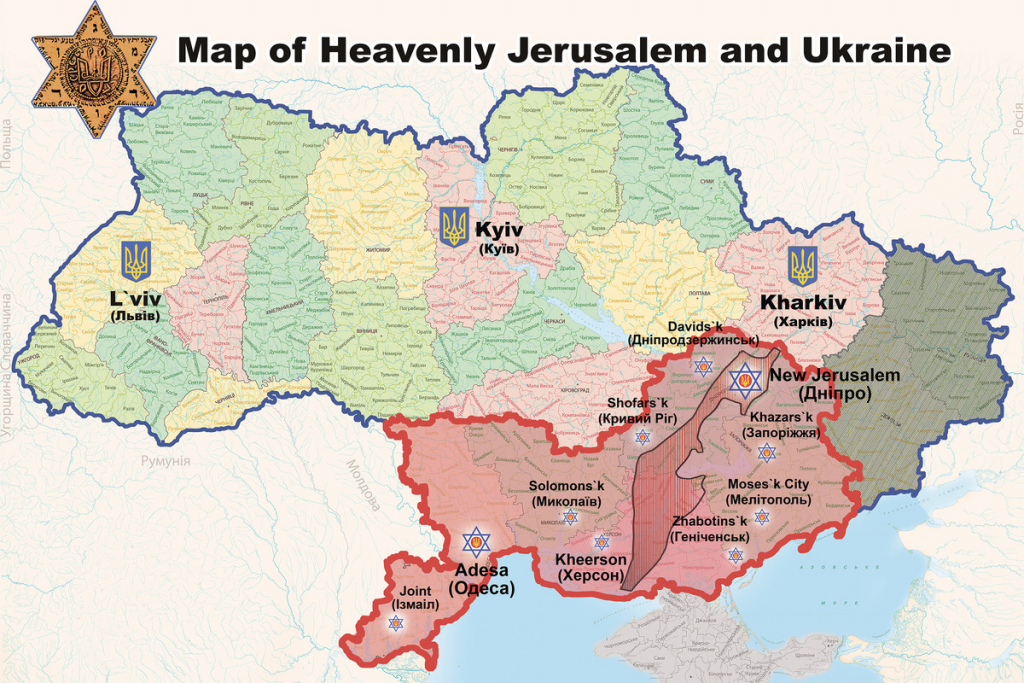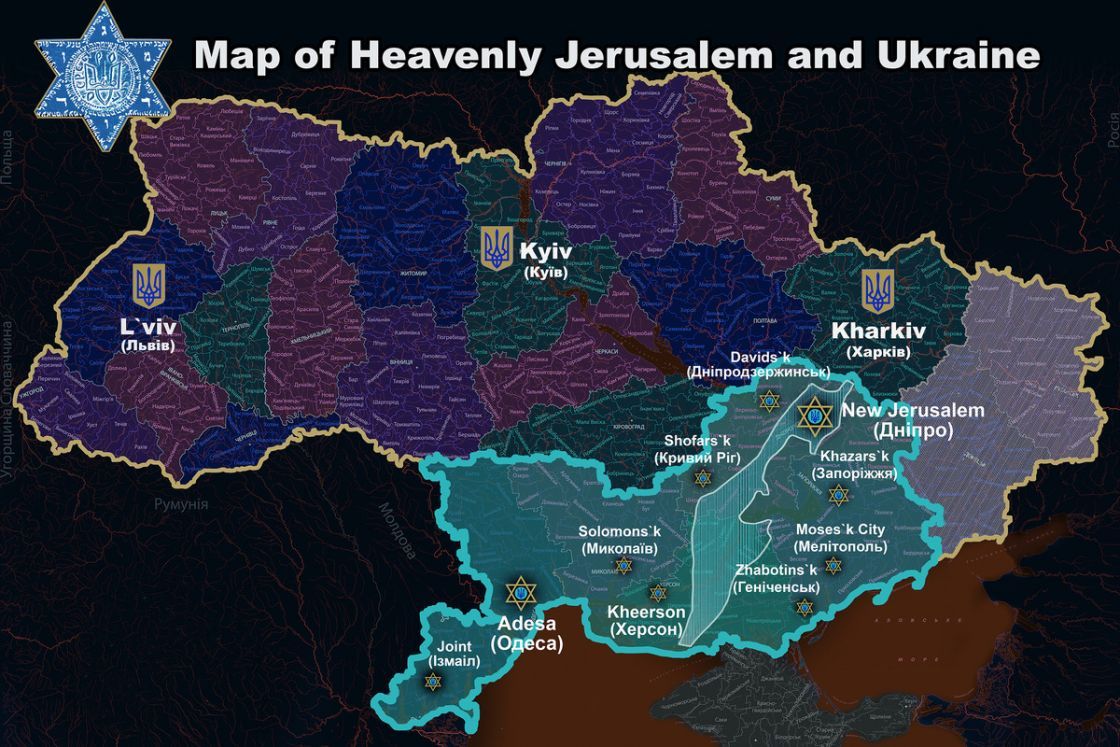- Articles
- Posted
End of the Grain Deal and “New Israel”
The grain agreement signed between Russia and Ukraine, with Turkish mediation, ended on July 22. The agreement stipulated allowing transport of Ukrainian grain across the Black Sea, provided that the shipments be inspected in the Turkish Bosphorus Strait, under supervision of Turkey and the UN, so that they would not be used to transport weapons.
Russia and Ukraine produce more than a third of the global grain production, including wheat and maize. Although world food prices were continuously rising for years prior to the battle in Ukraine, the West turned its media machine on to relay the image that the “Russian war on Ukraine” is the reason behind the global food crisis, especially in African countries and poor countries in general.
To whom did Ukraine sell its grain?
Since signing of the grain deal a year ago, Ukraine and Western countries have been put to the test before the entire world, on how Ukraine will dispose of its grain that the deal allowed exporting. The result was as follows:

More than 20 million tons of foodstuffs have been exported since last February 6 from 3 Ukrainian ports on the Black Sea.
Countries with high income (the EU, UK, and others) received 8.6 million tons (or 47%) of the goods.
Countries with above average income (China, Jordan, Malaysia, and others) received 6.1 million tons (or 33%) of the goods.
Countries with below average income (Bangladesh, India, Indonesia, and Pakistan) received 2.9 million tons (or 16%) of the goods.
Poor countries (Somalia, Ethiopia, Yemen, Sudan, Afghanistan, and Djibouti) received 0.55 million tons (or 3%) of the goods, of this little amount, more than two-thirds (0.396 million tons) were paid for to Ukraine through the World Food Program.
That is, Ukraine did not actually sell directly to poor countries except 1% of its grain. Despite that, the West continues shamelessly to pretend to care for the poor countries.
Preventing extension of the deal by the Russian side came as a result of the failure of the Western side, and implicitly the Ukrainian side, to fulfill its obligations within the deal, including neutralizing the export, transportation, and securing of Russian grain from Western sanctions that caused a global rise in food prices. However, there are other aspects and levels to understand the issue of stopping the grain deal.
First: The economic-political dimension
During the past year, the Ukrainian grain export, especially since it was done in a purely commercial manner to the richest and least needy countries, secured an important part of the supplies of the Ukrainian military machine. However, perhaps more important than that, this export provided alternatives to Western countries, which practically monopolized Ukrainian grain production, leaving the rest of the world to drown in grain shortages and high prices caused primarily by Western sanctions that raised transport and insurance prices and made the necessary financial operations to sell grain unreachable after blocking Russia from the SWIFT system. This global food crisis is not a coincidence or a byproduct of the conflict, but rather one of the goals that Western elites have become clear about in their program to reduce human population. For example, one could refer to the full statement by Kamala Harris, the US Vice President two weeks ago during a conference on combating climate change, where she said: “We must invest in reducing the population”.
Russia, on its part, over the past year, has been able to come up with alternatives to traditional export methods that existed prior to the Ukraine battle. The old routes were linked to the SWIFT system, insurance through Western banks, and specific shipping paths. During this year, Russia was able, in agreement with African and Middle Eastern countries, as well as countries in Latin America and Asia, to find alternatives so that Russian grain is exported to these countries at reduced prices, and even free of charge to some countries of the most in need, specifically six African countries: Burkina Faso, Zimbabwe, Mali, Somalia, Central African Republic, and Eritrea.
Second: The military-security dimension
Despite having joint Turkish-UN inspection and control over grain shipments at the Bosphorus Strait, Russian officials have repeatedly stated that weapons are being passed to Ukraine under the guise of the grain deal, and under the guise of the humanitarian aid line across the Black Sea. Assuming that Turkey and the UN play an impartial role in the inspections, this does not negate the possibility of arms shipments beyond the Bosphorus Strait, because the shortest path from the Bosphorus to Ukraine passes near Bulgaria and Romania, two NATO countries, not to mention that Bulgaria itself has recently been involved in openly sending weapons to Kiev last July with a shipment of 100 armored vehicles.

Third: The political-strategic dimension
Stopping the grain deal, and with it stopping the so-called “humanitarian line” across the Black Sea, will not, of course, mean stopping the resources through which the West militarily and logistically supports Ukraine. This is because the supply lines towards Ukraine, and its western part in particular, are still wide open, as Ukraine has long borders with Poland, Slovakia, Hungary, Moldova, and Romania, all of which are NATO members, except Moldova, which has the status of a NATO partner.
Nevertheless, terminating the grain deal, as well as the recent naval attacks carried out by Ukraine, including recently at the Crimean bridge, and Russia’s announcement that any ship that will go to Ukrainian ports, whether military or commercial, will be considered a military target for Moscow; all of this means that Russia has practically decided to completely close the Black Sea to Western influence. While both Romania and Bulgaria overlook the Black Sea, their weight, whether political, military, or economic, does not allow them to pose a threat of any kind to Russia’s control of the Black Sea. Not to mention, the popular and political mood in these two countries is very volatile and sensitive, and is not completely submissive to American will.
The Black Sea has always been one of the most important internal seas for Russia, whether during the tsarist era or during the Soviet Union. Between 1991, when the Soviet Union collapsed, and 2014, when Crimea was taken back, the Black Sea had turned into an area to threaten Russia contrary to historical positioning. This was particularly so with the accession of Bulgaria and Romania to NATO in 2004 and then the coup in Ukraine in 2014, which brought Western agents to power.
Crimea’s return to Russia was the first step in restoring Russian control over the Black Sea, and closing it today to NATO and its use against Russian interests is the second step in a geostrategic process whose importance is almost equal to the liberation of the eastern regions of Ukraine, which have an overwhelming majority of Russian speakers, something which might be even more important.

Fourth: The end of the “New Israel” Project?
Talk about establishing a “new Israel”, or what they call “Heavenly Jerusalem”, in southern Ukraine goes back more than 20 years. The story began with the conviction of the centers of Zionism, especially in the Jewish Agency and its headquarters in New York, that the continuation of “Israel” in the medium and long term (and this was at the beginning of this century) is questionable and unsustainable.
The unsustainability of “Israel”, according to the theories of those who carry the idea of “Heavenly Jerusalem”, and according to the facts, is due to several factors, the most important of which are:
First: The demographic problem
This problem has five dimensions:
A. The steady increase in the number of settlers within a limited area with limited resources.
B. Within this same increase, the Haredim community (the ultra-Orthodox Jews who refuse to learn, refuse to serve in the military or perform any social service, and live as dependents on the state and society) is growing very rapidly (the average number of births in Haredim families is about nine children per family).

C. The relative increase in the number of those who pretend to be Jewish and non-religious Jews, within the artistic and scientific elite; those view “Israel” as a temporary job opportunity, and once conditions change for the worse, they are prepared to “quit” it and return to their countries of origin.
D. The so-called “Israeli society” is in fact several compounded societies, which is a natural result of the gathering of groups Jews and non-Jews from all over the world. The prevailing belief was that teaching Hebrew and Jewish culture would be an effective tool in achieving integration, leading to the formation of “one people”, and that each new generation would be more harmonious than the previous one. What actually happened, and as a result of the racist nature of the Zionist regime, is that the distinctions among the components of this “society” have been reinforced and deepened, generation after generation, to the extent that the Zionist regime deserves to be called an apartheid system. However, this system is a more racist version of apartheid South Africa; it is not only racist in favor of the Jews and against the Arabs, rather, its racism extends among the Jews themselves, who are classified among Ashkenazi, Sephardic, Mizrahi, etc., and within each of these categories there is a hierarchy from “best” to “worst”.
E. All these “internal” considerations within the so-called “Israeli society” are on one the one hand, and on the other is the increase in the number of the Arab population, whether in the West Bank, Gaza, or the 1948 territories. The “Israelis” view this increase in Arab population as the most dangerous threat to their existence and continuity, because all their attempts to transform the land that has a people to a “land without a people” not only fail, but that land’s people grow steadily and continuously, all over and despite all Zionist criminality.
Second: The economic problem
In connection with the demographic calculations, the economic problem emerges with its many aspects, whether those related to the ability to achieve proportionality between population growth and economic growth, the pathological spread of a special pattern of persistent unemployment (the Haredim), or the increasing emigration of the highest technical cadres with the continuing turbulent conditions. Not to mention that the economic growth of the entity was permanently dependent on Western aid, especially with weapons and technology, as armament has always constituted a huge obstacle for countries wishing to grow economically; where there are natural resources and possibilities for economic growth, colonial threats exist and intensify, and therefore spending on defense and armament becomes a constant burden and a permanent hindrance for development. This obstacle did not exist at all for “Israel”, as it obtains weapons and technology from the West for free. However, continuing in the same situation is now under threat, and Washington has even begun to pull weapons from the strategic stocks it has in the Zionist entity towards Ukraine. On the economic side, Western aid to the Zionist entity is also expected to decline steadily with the exacerbation of the global economic crisis that has been ongoing since 2008.
Third: The stubborn people
Attempts to end the Palestinian people’s resistance or circumvent it through the Oslo Accords and other agreements with the “Arab Ring” countries (the Arab countries bordering Palestine), and then attempts to dilute the issue through the “Abraham Accords” and by seeking to form an “Arab NATO”, all of which have absolutely failed. Rather, each new generation of the Palestinian people overdoes the previous generations with its expertise and creative capabilities in resistance. It can even be said that the Palestinian resistance, with its rich, diverse, and overlapping methods, has become the highest and most advanced school that combines Vietnamese guerrilla wars methods with political and civil action tools against apartheid in South Africa, and adds to them its own unprecedented methods. All of this left the Zionists in a state of strategic despair, especially with the development of asymmetric warfare methods, whether through missiles or drones, which could turn the colonizer’s life into a continuous nightmare.

Fourth: International balances
The realities of the changing international balance of power impose themselves on “Israel”, where the role of the Middle East thug is no longer possible or sustainable, by any means. Even the basic doctrines based on technological and military supremacy, especially the nuclear one, have come to an end with the development by Iran, Saudi Arabia, and Egypt, which promises serious transformations within one to two decades.
Back to the grain deal
Thus, the search for a new place for “Israel”, and in light of these and other facts, is not surprising. It should be noted that what is meant by “New Israel” is the same as what is meant by “Old Israel”, as neither is a “national home for the Jews”, but rather a settler-colonial project that uses the Jews to establish an advanced military base in an area of great importance in the geopolitical sense.
In this sense, is there today a more important location than the geopolitical location on the Black Sea and in the heart of Europe, and between Russia and NATO?
The hypothetical map of “New Israel” includes several important regions and cities in southern Ukraine overlooking the Black Sea: Odessa, Zaporizhzhia, Melitopol, Kherson, and Dnipropetrovsk. Where Odessa would be the economic capital and Dnipropetrovsk the religious capital. These cities are already inhabited by Ukrainian Jews and were at one time part of the Jewish “Khaganate Emirate” that lasted 400 years.
Those who adopt the idea do not talk about cutting this virtual map from Ukraine in the form of occupation, but rather talk about the possibility of renting it (for a period of 99 years) in order to establish therewithin high-tech agricultural kibbutz, so that it would be an ancillary to the old “Israel”, and a substitute for it in the event that it can no longer continue.
The closure of the Black Sea in the face of NATO after terminating the grain deal, and the Russian president’s talk about Odessa as “one of the most beautiful Russian cities”, as well as the gradual return of military action towards southern Ukraine, all of this leads to assuming that the “new Israel project” is seriously threatened. This development, if read from the point of view of the great battle between Russia and the West, is a positive development. After deployment of nuclear weapons in Belarus and the end of the grain deal, the chances of success of the West’s attempts through back doors to reach a deal with Russia that stops the natural development of matters towards striking American unilateralism are declining.
In essence, the “New Israel Project” is one of the expressions of the “Great Reboot” process that the Western financial elite seeks to achieve, through which it seeks to perpetuate its dominance over humanity. Therefore, directing a blow to this project is not a simple matter, and it will necessarily mean that the intensity of the battle, especially within Russia, will rise. However, as the saying goes: it is necessary to do what will necessarily happen. That is, Russia must turn around in its struggle with US imperialism against capitalism inside Russia, otherwise any military victory can simply evaporate, and even the existence of a unified Russia itself is exactly related to this inevitable turn.



